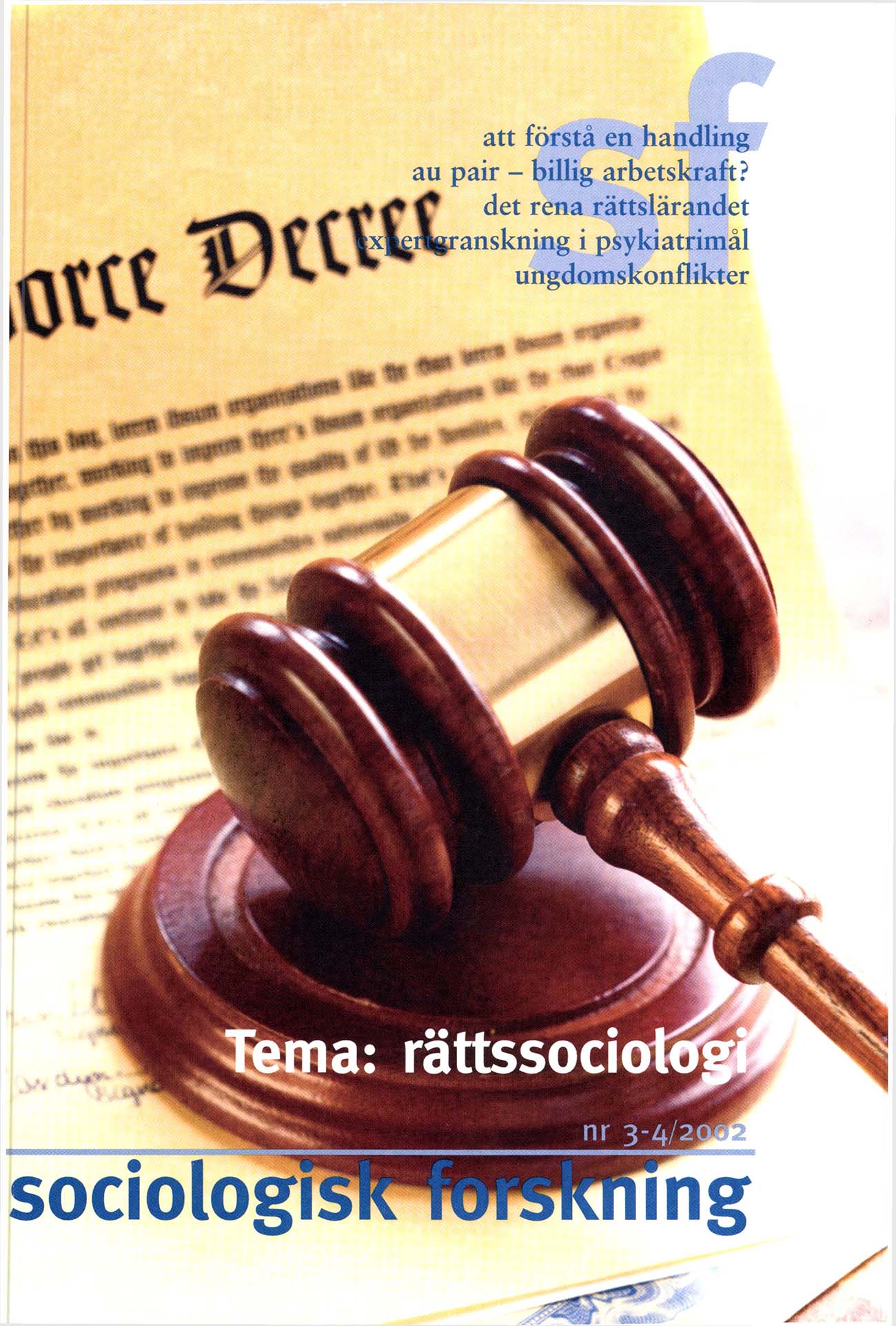Om att förstå en handling - från kausalanalys till normanalys
DOI:
https://doi.org/10.37062/sf.39.19439Keywords:
norm-analysis, power analysis, causal analysisAbstract
How to understand an action - from causal analysis to norm-analysis
In order to explain and understand actions, one has to find concepts that are sufficiently encompassing to make room for every aspect of underlying causes. Since norms govern and guide behaviour, whether it be social, economic, political/administrative or technical behaviour, the concept of “norm” has this capacity. In this article, the author argues for, and gives an exposition of, what he calls norm-analysis. Causal analysis is used as a point of contrast, and analyses of power as a point of departure, in elaborating the characteristics of normanalysis. It is argued that the proposed concept of “norm” has several advantages when it comes to understanding and explaining human action. The concept has three dimensions: (a) will and values, (b) knowledge and cognition, and (c) systemic possibilities for action. The three dimensions cover different aspects of human actions and behaviour, but the main point is that explanations of human action should be conceived in terms of a combinatory effect of these different dimensions. The norm model is not a theory but a kind of screening device in order to sort out relevant facts in a case. It thereby lays the foundation for a theory of action.
Downloads
Published
How to Cite
Issue
Section
License
All content in Sociologisk Forskning is published with immediate open access, under the Creative Commons license CC BY-NC-ND 4.0.
All content may be read, downloaded, shared and printed for non-commercial purposes, free and without fees. Contents may not be altered. When content is reused, author, source and a link to the copyright licence must be provided. The author retains copyright to their content. No publication fees are charged.





